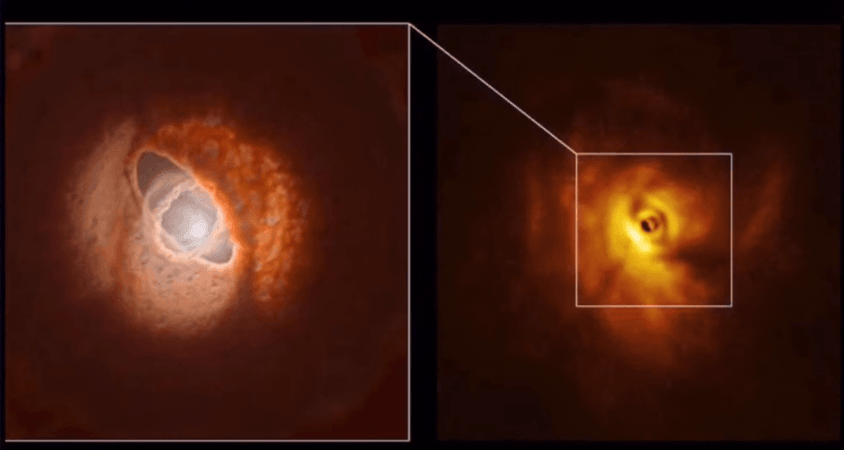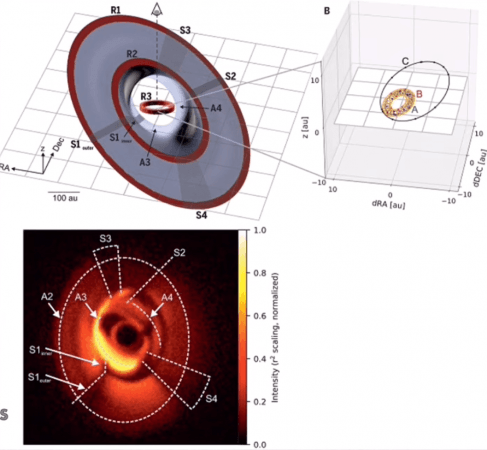Astronomers from the University of Nevada, Las Vegas (UNLV) believe that they may have discovered the first planet ever to orbit three stars. They proposed the possibility of a huge planet in the gap of GW ori in a faraway star system about 1,300 light years from Earth.
The discovery was emphasized in a paper published in the Royal Astronomical Society's Monthly Notices. This planet circling three stars is referred to as a circumtriple planet, and its existence indicates that planet creation is less rare than previously assumed.

Observation
GW Ori is a star system encircled by a massive disc of dust and gas, yet it is unique in that it contains not one, but three stars.
UNLV researchers used data from the advanced Atacama Large Millimeter/submillimeter Array (ALMA) observatory to examine the three discovered dust rings around the three stars, which is crucial for planet formation.
The researchers looked at the potential of gravitational torque from the three stars creating the gap. Now that the GW Ori system is more detailed, experts believe a planet — a gaseous globe the size of Jupiter — may explain the dust cloud gap. Asteroid scientists may be seeing the planet shape its orbit during its first million years of life.

Additional ALMA observations are planned in the future, which may give direct proof for the phenomena. "This may be the first proof of a circumtriple planet creating a gap in real-time," said Jeremy Smallwood, the main author of the new paper from the University of Nevada, Las Vegas.
With this system, we may assume that planet formation is normal. Circumbinary planets are reported to orbit two stars simultaneously. But circumtriple planets are rarer, despite estimates that a tenth of all-stars concentrate in three-star systems or more. But their presence shows planets may form anywhere, even in this most unusual of systems.
What about Exoplanets?
Exoplanets, on the other hand, are planets that circle other stars than the sun. Astronomers have verified the existence of over 4,000 exoplanets circling distant stars, and at least 1,000 new planets waiting for confirmation.
A research study on the feasibility of life in H2-dominated exoplanet atmospheres was published in the journal Nature astronomy. The low density of molecular hydrogen gas leads to an expanding atmosphere, making it the most observable rocky planet atmosphere. But the capacity of life to endure such extreme conditions has not been proven.
The researchers show that single-celled microorganisms (Escherichia coli and yeast) can survive and thrive in a 100% H2 condition. Their work shows the value of laboratory tests in determining whether extraterrestrial settings may contain observable life.

Another instance of a mysteriously vanished exoplanet happened.
Rather than it being a complete planetary object, as initially observed in 2004, one possibility is that it is a massive, growing cloud of dust created by a collision between two big planets circling the nearby blazing star Fomalhaut. Observations made in the future may validate this unusual finding.
The object, Fomalhaut b, was discovered in 2008 using data from 2004 and 2006. Many years of Hubble monitoring proved it was a moving dot. Until then, most exoplanet evidence came from indirect detection techniques like tiny stellar wobbles and planet shadows moving in front of their stars.
Another possibility is that their investigation, which evaluated all available Hubble data on Fomalhaut, uncovered many features that collectively suggest that the planet-sized body may have never existed in the first place.















